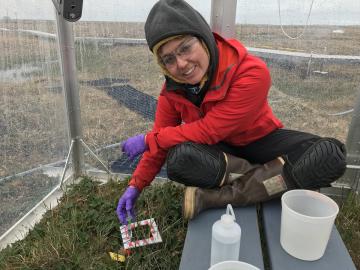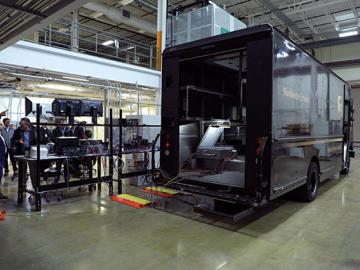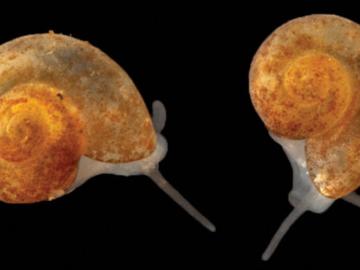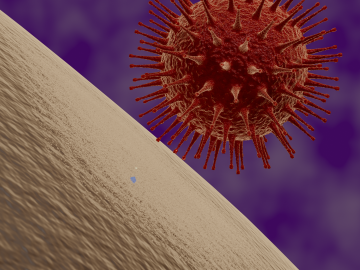
Filter News
Area of Research
- Advanced Manufacturing (2)
- Biological Systems (2)
- Biology and Environment (136)
- Biology and Soft Matter (1)
- Computational Biology (2)
- Computational Engineering (3)
- Computer Science (8)
- Electricity and Smart Grid (2)
- Energy Science (119)
- Fusion and Fission (4)
- Fusion Energy (1)
- Isotopes (7)
- Materials (38)
- Materials for Computing (4)
- Mathematics (1)
- National Security (41)
- Neutron Science (31)
- Nuclear Science and Technology (3)
- Quantum information Science (3)
- Sensors and Controls (1)
- Supercomputing (92)
News Type
News Topics
- (-) Bioenergy (109)
- (-) Biomedical (70)
- (-) Clean Water (32)
- (-) Cybersecurity (34)
- (-) Environment (202)
- (-) Grid (70)
- (-) Machine Learning (64)
- (-) Mathematics (11)
- (-) Summit (70)
- 3-D Printing/Advanced Manufacturing (137)
- Advanced Reactors (37)
- Artificial Intelligence (127)
- Big Data (70)
- Biology (126)
- Biotechnology (38)
- Buildings (65)
- Chemical Sciences (83)
- Composites (33)
- Computer Science (216)
- Coronavirus (47)
- Critical Materials (28)
- Education (5)
- Element Discovery (1)
- Emergency (4)
- Energy Storage (107)
- Exascale Computing (65)
- Fossil Energy (8)
- Frontier (61)
- Fusion (63)
- High-Performance Computing (125)
- Hydropower (12)
- Irradiation (2)
- Isotopes (58)
- ITER (9)
- Materials (147)
- Materials Science (145)
- Mercury (12)
- Microelectronics (4)
- Microscopy (51)
- Molten Salt (10)
- Nanotechnology (58)
- National Security (81)
- Neutron Science (163)
- Nuclear Energy (113)
- Partnerships (68)
- Physics (64)
- Polymers (31)
- Quantum Computing (52)
- Quantum Science (90)
- Security (29)
- Simulation (61)
- Software (1)
- Space Exploration (26)
- Statistics (4)
- Transportation (92)
Media Contacts

OAK RIDGE, Tenn., May 5, 2020 — By 2050, the United States will likely be exposed to a larger number of extreme climate events, including more frequent heat waves, longer droughts and more intense floods, which can lead to greater risks for human health, ecosystem stability and regional economies.

While some of her earth system modeling colleagues at ORNL face challenges such as processor allocation or debugging code, Verity Salmon prepares for mosquito swarms and the possibility of grizzly bears.

In the early 2000s, high-performance computing experts repurposed GPUs — common video game console components used to speed up image rendering and other time-consuming tasks

Researchers at the Department of Energy’s Oak Ridge National Laboratory (ORNL) in late February demonstrated a 20-kilowatt bi-directional wireless charging system installed on a UPS medium-duty, plug-in hybrid electric delivery truck.

In the race to identify solutions to the COVID-19 pandemic, researchers at the Department of Energy’s Oak Ridge National Laboratory are joining the fight by applying expertise in computational science, advanced manufacturing, data science and neutron science.

Sometimes conducting big science means discovering a species not much larger than a grain of sand.

A versatile class of flexible, protein-like polymers could significantly advance future drug delivery methods. But first, scientists have to develop a reliable process for tailoring these polymers into shapes that can effectively transport medicines throughout the human body.

Researchers at the Department of Energy’s Oak Ridge National Laboratory have used Summit, the world’s most powerful and smartest supercomputer, to identify 77 small-molecule drug compounds that might warrant further study in the fight

Biological membranes, such as the “walls” of most types of living cells, primarily consist of a double layer of lipids, or “lipid bilayer,” that forms the structure, and a variety of embedded and attached proteins with highly specialized functions, including proteins that rapidly and selectively transport ions and molecules in and out of the cell.

Scientists at the Department of Energy’s Oak Ridge National Laboratory have developed a new method to peer deep into the nanostructure of biomaterials without damaging the sample. This novel technique can confirm structural features in starch, a carbohydrate important in biofuel production.


